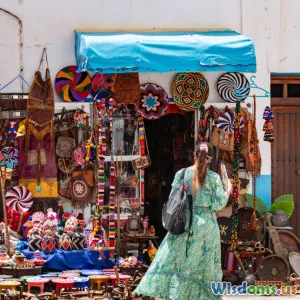
Are Local Traditions Dying Out in a Global Marketplace
8 min read Explores the impact of globalization on local traditions, balancing preservation with modern influences in today's interconnected world. (0 Reviews)
Are Local Traditions Dying Out in a Global Marketplace?
Introduction
In our ever-shrinking world, where information travels at lightning speed and international trade seamlessly connects continents, a pressing question emerges: are local traditions dying out in a global marketplace? Local cultures represent the fabric of human identity, rich with unique customs, rituals, art, and values. Yet, the global economy—characterized by mass-produced goods, multinational corporations, and homogenized media—often promotes standardization and global tastes. This dynamic places immense pressure on tradition to evolve, adapt, or risk extinction.
Exploring this phenomenon offers not only insights into cultural preservation but also a vital understanding of what global interconnectedness means for diversity. Are collective local identities at risk of erosion, or can they survive, even thrive, within a global framework?
The Forces Reshaping Local Traditions
Globalization: The Double-Edged Sword
Globalization has undoubtedly woven closer ties between nations, facilitating trade, travel, and communication. However, this has brought about the pervasive spread of homogeneous cultural products—think fast food chains like McDonald's, global entertainment like Netflix, and international fashion brands such as Zara or H&M. These entities promote lifestyles and values that sometimes displace indigenous cultural expressions.
Take, for example, the widespread consumption of Western holidays like Christmas in countries that once celebrated different festivals predominant to their cultural histories. In Japan, the commercialization of Christmas, including Santa Claus and gift-giving, overshadows traditional practices, reflecting how global norms infiltrate even deeply rooted customs.
Urbanization and Migration Patterns
Rapid urbanization attracts populations from rural areas to metropolitan hubs where global culture thrives. This migration process often leads to the dissolution of tightly knit communities where traditions are passed down through generations.
In places like Mexico City or Mumbai, younger generations are more exposed to globalized media and corporate cultures than traditional community ceremonies or folk arts. This disrupts the transmission of intangible cultural heritage like oral storytelling, indigenous dances, or traditional cuisines.
Technological Changes and Cultural Hybridization
The Internet and social media platforms facilitate a vibrant exchange of ideas and cultural practices. While this exposure can dilute some traditions, it can also foster cultural hybridization—inventing new traditions that blend local and global elements.
For instance, in Brazil, the global phenomenon of hip-hop merged with Afro-Brazilian rhythms and themes, creating a unique movement that respects its roots while engaging a global audience. These hybrid cultures signify resilience and creativity—not extinction.
Case Studies: Traditions in Flux
The Disappearance of Indigenous Languages
Of the nearly 7,000 languages spoken around the world, approximately half are expected to become extinct within this century. Language is fundamental to tradition, embedding indigenous knowledge, oral traditions, and community identity.
For example, the Ainu people of Japan have seen their language decline drastically due to assimilation policies and mainstream Japanese culture dominance. However, recent revitalization efforts, including language classes and cultural festivals, showcase an active resistance to losing heritage.
The Global Fashion Industry and Local Textiles
Many traditional textile practices face competition from cheap, mass-produced clothing. For example, authentic handwoven saris in India compete with factory-produced garments, threatening the livelihoods of traditional weavers.
Yet, through initiatives like Fair Trade certifications and e-commerce platforms, artisans now tap into global markets eager for sustainable and authentic products. Brands such as Patagonia and Stella McCartney incorporate artisanal textiles, preserving traditional craftsmanship amid global commerce.
Culinary Traditions: Preservation Amid Fusion
Local food cultures often wrestle with global fast-food penetration. In Italy, global pizza chains like Domino's coexist with centuries-old pizzerias preferred by locals for their traditional recipes.
Simultaneously, the entrance of diverse ingredients and cooking styles leads to innovative dishes—fusion cuisine—that reflect a dynamic cultural landscape rather than static disappearance.
Strategies for Sustaining Local Traditions
Cultural Education and Community Engagement
Embedding cultural education at the community level—from schools to festivals—is pivotal. UNESCO's Intangible Cultural Heritage lists recognize practices worldwide, encouraging governments and organizations to safeguard traditions.
Community-based initiatives in countries like Peru promote Quechua dance and music classes for youth, fostering pride and continuity.
Responsible Tourism and Ethical Consumption
Tourism can revitalize traditions when managed sensitively. Travelers eager to experience authentic culture provide financial incentive for preservation, but over-tourism risks commodification.
The success of Bhutan’s "High Value, Low Impact" tourism policy showcases balancing economic benefits without eroding cultural integrity.
Leveraging Technology for Preservation
Digital archiving of songs, rituals, and crafts makes traditions accessible globally, allowing dispersed communities to reconnect.
Apps like Duolingo introduce endangered languages to wider audiences, while social media creates platforms for sharing traditional practices, stimulating interest among younger generations.
Conclusion: Adaptation over Extinction
Are local traditions dying out in a global marketplace? The answer is complex. While globalization undeniably poses pitfalls—leading to loss when traditions cannot adapt or resist—the very same forces create opportunities for cultural resilience and reinvention.
Rather than succumbing to extinction, many local traditions evolve, hybridize, or find new life in global niches. The task lies with communities, policymakers, and consumers to consciously support cultural diversity—through education, sustainable practices, and appreciation for the rich tapestry of human heritage. The future of local traditions in a globalized world is not a simplistic tale of loss but rather an ongoing story of survival and transformation.
References
- UNESCO Intangible Cultural Heritage: Safeguarding Traditional Culture
- "Language Extinction and Revitalization," Ethnologue, 2023
- Bhutan’s Tourism Policies - Ministry of Economic Affairs
- Globalization and Cultural Change, UNESCO Courier, 2022
- "The Role of Technology in Cultural Preservation," Journal of Digital Humanities, 2021
Rate the Post
User Reviews
Popular Posts



















